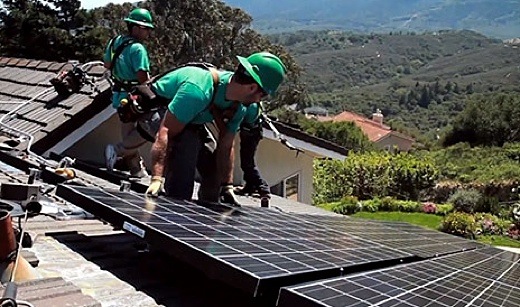California ISO releases five year plan as state transitions to renewable energy

 Most everything we do is dependent in some way upon electricity. Without it, as we’ve all discovered during blackouts, our modern life screeches to an immediate halt, affecting everything from traffic lights to internet access.
Most everything we do is dependent in some way upon electricity. Without it, as we’ve all discovered during blackouts, our modern life screeches to an immediate halt, affecting everything from traffic lights to internet access.
The California ISO (Independent System Operator) is a key link in the system that keeps the electricity flowing. They are a non-profit public-benefit corporation that manages most of the high voltage power grid in the state, moving huge amounts of power along the wholesale backbone, balancing supply and demand, and enabling electricity to be routed and sold quickly and easily. That’s a huge responsibility, especially considering that California has 18% of the population of the U.S. and the state plans 20% renewable energy by 2020, with new legislation possibly upping that to 33%.
As of 2008, California produced 14% of its electricity from renewable sources (hydro, geothermal, biomass, wind, and solar), 15% from nuclear, a whopping 39% from natural gas, and 28% which they describe as “imports” but which I assume means coal plants in other states that send power to California. (The City of Los Angeles still gets 40% of its power from coal in Utah and Nevada.)
Balancing these various power sources with demand in a geographically large and populous state is clearly a challenging task. California ISO has just released their five year plan (PDF) detailing what they will be doing as the state transitions to renewable energy, upgrades its aging grid, and builds for the future.
In the plan, they note “The New York Times described the ISO challenge of balancing supply and demand while managing unprecedented levels of intermittent resources as a ‘dress rehearsal for America.’”
The plan focuses on three areas. 1) System. The grid, infrastructure, and market operations must be stable and reliable. 2) Environment. Meeting the 33% target for renewable energy and insuring the grid can handle these mostly variable sources of energy. 3) Organization. Cut costs, and improve managing and reporting.
Here are some of the highlights from the plan:
System- Grid operators will receive updates every few milliseconds rather than every 4 seconds in their soon to be opened high-tech headquarters. Clearly the more real-time that grid reporting is, the faster grid operators can react to changes and plan for the future. High-tech weather monitoring which, combined with new predictive technology, will allow them to better determine grid conditions 15-30 minutes into the future. Improved security to prevent intrusions into the system, as a hacker inside the grid could be seriously dangerous. Faster, better, more accurate pricing will reduce pricing anomalies as well as credit risk. They will examine existing infrastructure, especially in high growth areas, to determine where systems need to be upgraded.
Environment- Most renewable energy sources like wind and solar are variable (hydro, geothermal, and tidal power are exceptions) and thus the grid needs to plan for this, especially since California will have ever-increasing amounts of renewable energy. A primary way to handle this is by storing renewable energy for future use, such as in batteries, flywheels, compressed air, pumped hydro, and in molten salt as done with solar thermal. Research and development here is ongoing and crucial.
Organization- Hire and train highly qualified personnel. Provide an atmosphere that encourages them to stay. Develop effective reporting and monitoring capabilities, and cut costs by merging data centers.
Cal ISO is one of those quiet agencies that does a huge amount. California is in transition from coal and natural gas power to renewable sources. While renewable energy is mostly variable, this obviously presents challenges.
But imagine if we could generate the bulk of our power from clean renewable sources. In addition to the obvious environmental benefits, we would have energy security – power produced within the state from our own resources.



